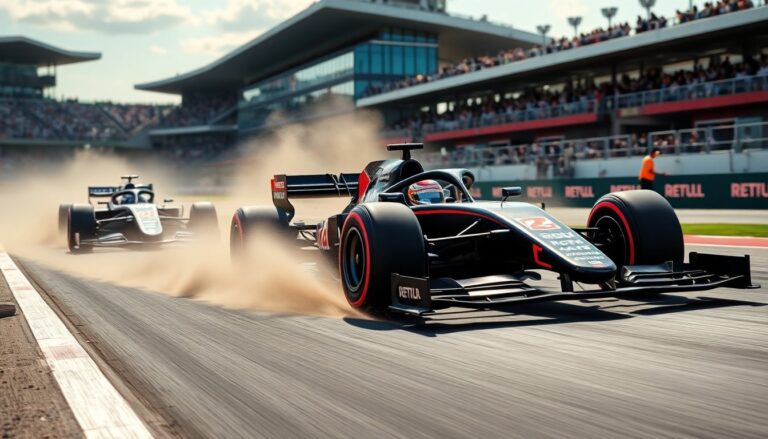Argomenti trattati
Formula 1 (F1) is not merely a sport; it is a showcase of engineering excellence and a battleground for the world’s best drivers and teams. Since its inception in the early 20th century, F1 has undergone a remarkable transformation driven by technological advancements and a relentless pursuit of speed. This article explores the evolution of Formula 1, highlighting the pivotal innovations that have shaped the sport and the future trends likely to redefine racing.
The historical context of Formula 1
To understand the current state of Formula 1, one must first appreciate its rich history. The inaugural Formula 1 World Championship took place in 1950, featuring a series of races across Europe. Early cars were simple, with minimal safety features, and the focus was primarily on raw power and driver skill. As the sport gained popularity, the demand for more advanced technology increased, leading to the introduction of aerodynamics and more powerful engines.
The rise of aerodynamics
In the 1960s and 1970s, teams began to realize that aerodynamics could significantly enhance performance. The introduction of the ground effect in the late 1970s revolutionized car design, enabling vehicles to generate downforce and maintain higher speeds through corners. This innovation was a game-changer, allowing drivers to push the limits of their cars and compete at unprecedented levels. The infamous Lotus 79 is often cited as a prime example of how aerodynamics changed the racing landscape.
Technological advancements in the modern era
Fast forward to the 21st century, and Formula 1 has evolved into a high-tech sport that utilizes cutting-edge technology in every aspect of racing. The introduction of hybrid engines in 2014 marked a significant shift in the sport’s approach to performance and sustainability. These engines combine traditional internal combustion with electric power, leading to improved fuel efficiency and reduced carbon emissions. The dual power systems have also introduced a new layer of strategy, as teams must carefully manage energy recovery and deployment.
The role of data analytics
In addition to hybrid technology, the advent of data analytics has transformed how teams prepare for races. Engineers and strategists now rely on real-time data from various sensors installed on the cars to make informed decisions. This data includes tire performance, fuel consumption, and temperature, allowing teams to optimize their strategies throughout the race. The use of telemetry has not only improved performance but has also heightened competition among teams, as they seek to gain an edge over their rivals.
The future of Formula 1
As the world moves toward a more sustainable future, Formula 1 is embracing this change by focusing on environmentally friendly technologies. The sport has set ambitious goals to become carbon neutral by 2030, pushing teams to innovate further in areas such as renewable energy and sustainable materials. Additionally, the upcoming regulations for 2026 promise to introduce even more advanced hybrid systems, emphasizing the importance of efficiency and performance.
Fan engagement is another area where technology is making significant strides. The introduction of virtual reality (VR) and augmented reality (AR) experiences has the potential to transform how fans interact with the sport. These technologies can provide immersive experiences, allowing fans to feel as though they are part of the action, whether they are at the track or watching from home.
The evolution of Formula 1 is a testament to the ingenuity and determination of the teams, engineers, and drivers involved in the sport. From its humble beginnings to the high-tech marvels of today, F1 continues to push the boundaries of what is possible, setting the stage for an exciting future filled with innovation and competition. As technology advances and the sport evolves, one thing remains clear: Formula 1 will always be at the forefront of automotive excellence and racing strategy.

